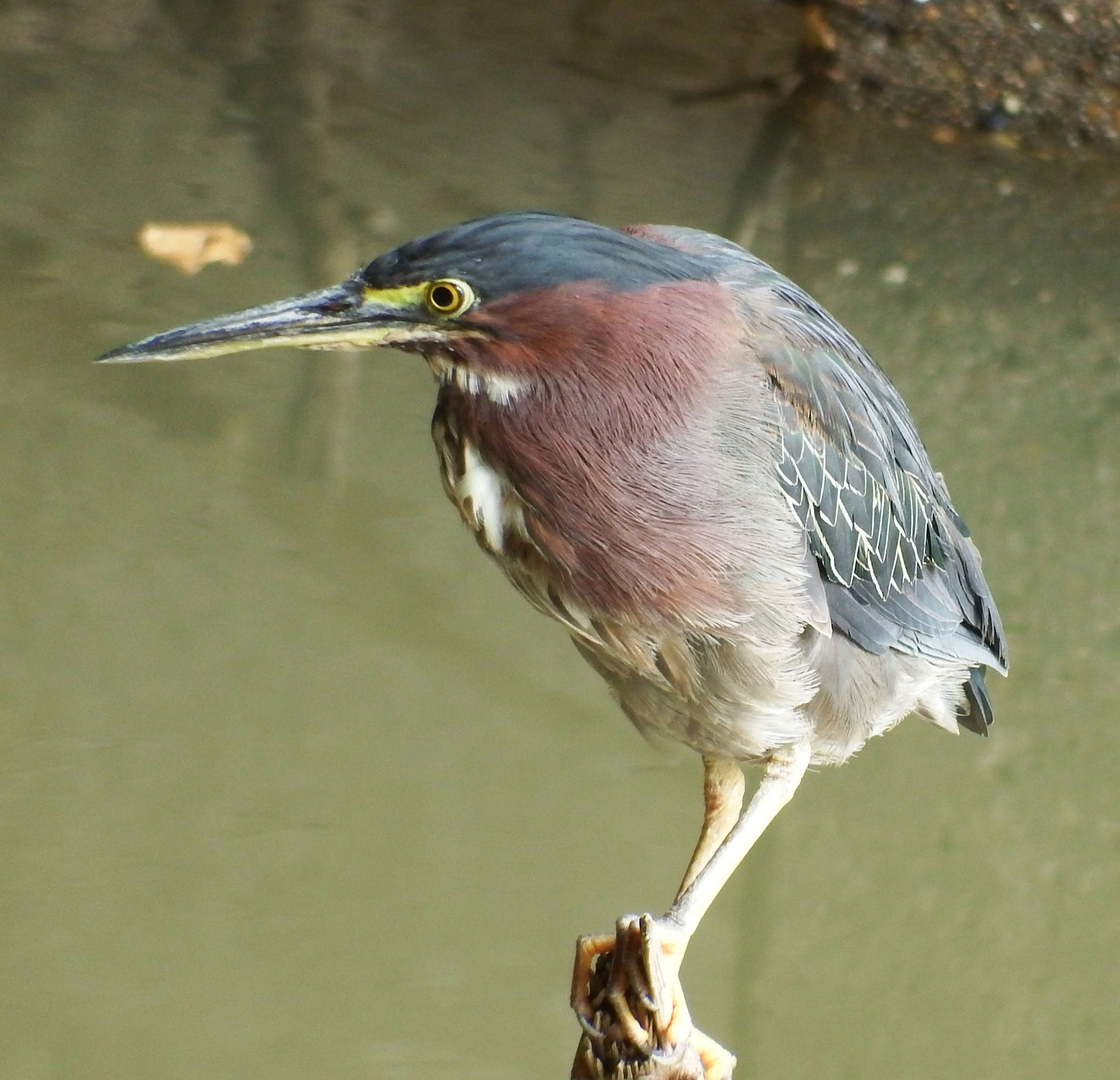Green Heron Hunting

I may have to rename this blog, “What do Herons Eat?”
Last week, we discussed night herons. This week we turn to Green Herons. I didn’t plan to make August heron month, but I found this bird not too far from the Buffalo Bayou Partnership offices at Allen’s Landing. It was her idea to commandeer this blog by catching a fish on camera. That’s what Green Herons eat. Fish.
Green Herons aren’t uncommon on Buffalo Bayou, but you don’t notice them as often as those show-off herons (blue and night). If you paddle the bayou, you are no doubt familiar with them. The Green Heron is the crow-sized dark bird that keeps flying ahead of you each time you catch up to it. You have to work a bit to see a Green Heron. They usually prefer privacy and they blend in with their surroundings. This may be because they are smaller and as such, perhaps on the menus of a few larger predators, but that’s just a supposition.
I was surprised at how long this bird stood there with a live fish dangling from its mouth. Herons (and most other piscivores) have to flip a fish around so it goes down head first. Fish scales lie smoothly when approached from the head but scratch all the way down if you try to eat a fish tail first. I wondered if letting the fish air out for a while subdued it some so that when the heron went for the inevitable flip to head first, there was less chance for the fish to wriggle mightily and escape.
Green Herons have two distinct postures. When they are standing still, they draw their neck down into their body, but when they are ready to strike, they stretch their necks out. And while they usually hunt in shallow water, Green Herons can dive into deeper water to catch fish. This heron got pretty wet; notice the splash and how ruffled his feathers are just after his catch.
Cool fact, Green Herons are one of a very few birds who use tools in the wild. They will float a lure (a feather, a crust of bread, a dead insect) on the water surface and wait for a fish to come to check out the bait. Our heron seemed not to be in a tool-using mood, but perhaps that’s because he is still young. The amount of speckling on the bird’s chest and the amount of yellow still in its lower beak and extending beak-wards from the eyes (called the lores) makes me think this is a juvenile bird just transitioning to adult plumage.
Whatever the reason, this was a good day to be a Green Heron. Not so much to be a small silver fish.

